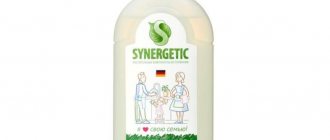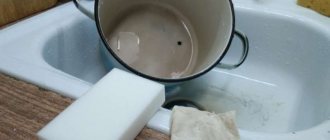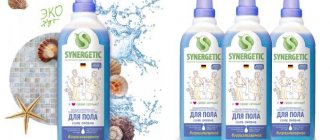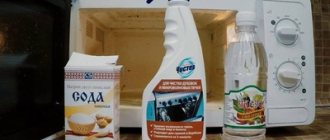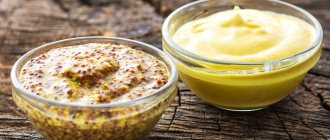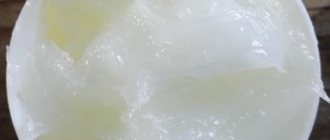Few people have thought about the versatility of such a home assistant as a dishwashing sponge. But various materials and shapes make it possible to increase the range of its applications. Different stains and surfaces require different sponges; each has its own shelf life, degree of absorption, and ability to foam. To understand this issue in more detail, consider the classification of sponges and all other related aspects.
Classification by material
Of course, there are not only foam sponges. The variety of materials allows you to match it to any surface to be cleaned.
Silicone
This new product appeared to conquer the market not so long ago. A silicone sponge for washing dishes, according to manufacturers, is much more convenient and practical than its foam counterparts. They are durable, do not absorb odor, are resistant to high temperatures, do not deform and do not leave behind rows of bacteria.
But in practice everything is not so rosy. The silicone sponge pleases with its bright colors and funny shapes; it really doesn’t need to be changed every 2 weeks, but the issue of convenience is very questionable. Firstly, it practically does not retain detergent on itself. Secondly, it slips in your hands, preventing you from thoroughly washing the dishes. Thirdly, you don’t even have to try to wash dried food with such a sponge.
- Durable;
- Resistant to bacteria and deformation;
- Price (taking into account the absence of the need for regular replacement).
- Convenience and quality of use;
- Increased detergent consumption.
Metal
This is a faithful comrade in the fight against dried and old stains. No one can wash away grease that has burned onto a pot or pan better than an iron sponge. Made from fine stainless steel shavings, due to its popularity it is never in short supply. You need to change a metal sponge for washing dishes quite often, since it crumbles with use, leaves rusty stains where it is stored, and small cuts on the skin of your hands.
Never use it to remove stains from Teflon, plastic or enamel cookware. It is intended only for cast iron and scratch-resistant products.
- Copes with old dirt and burnt fat;
- Easy to find on sale;
- Low price.
- Leaves scratches on most materials;
- Can injure the skin of the hands.
Foam rubber
The most popular and everyone's favorite sponge. The soft foam surface gently cleans dishes, foams well and absorbs water, and the second side is often equipped with a layer of abrasive additives. Suitable for all surfaces. The price varies widely and depends on the manufacturer, quality of materials, size.
Foam sponges for washing dishes must be changed every 1-2 weeks. Otherwise, bacteria and an unpleasant odor will settle on it, which will transfer to clean dishes.
- Variety of shapes, colors, prices;
- Universal;
- Foams well and absorbs liquids;
- The double-sided surface removes a variety of contaminants.
- It is unlikely to cope with burnt stains;
- Needs to be changed frequently.
Abrasive
Sponges made of hard materials: plastic, metal or wrapped in polypropylene thread. They cope with dirt with minimal effort, but, like metal ones, they are not suitable for all surfaces. They quickly lose their usefulness, especially plastic ones.
Abrasive sponges for washing dishes are often equipped with a handle to protect the skin of your hands from damage. It is better to take a closer look at such specimens.
- Acceptable price;
- Highly effective in combating persistent pollution;
- Plastic options are also suitable for delicate surfaces.
- They quickly become unusable;
- Metal abrasive models are only suitable for cast iron and baking sheets without a non-stick coating.
Pulp
Such sponges are, first of all, famous for their hypoallergenic and environmental properties. The porous structure absorbs moisture well and foams, and the antibacterial composition, which is often impregnated with cellulose sponges, does not allow pathogenic organisms to multiply.
They are used not only in washing dishes, but also in cleaning walls, tiles and bathrooms.
- Safety, saving cleaning agent;
- Cellulose copes well with unpleasant odors and stains on plumbing fixtures;
- You can change it no more than once a month.
- They absorb moisture strongly and must be dried thoroughly.
Special sponges
metal sponges on sale
They are recommended to be used only for heat-resistant cookware: frying pans, roasting pans, cauldrons, skewers, oven racks and baking sheets. Under no circumstances should you try to wash dirt from delicate Teflon or enamel dishes with them, as they will leave scratches on plastic ones, which will become an excellent place for bacteria to multiply.
For such dishes, you can find sponges for delicate surfaces on sale .
Most often they are a piece of spongy material wrapped in plastic, or in a special fabric made of soft synthetic fibers, or with a special layer of fabric resembling an eraser. This sponge will very gently clean the surface of the dishes and will not leave scratches on it. But such sponges are rather short-lived.
Sponges soaked in detergent.
Each housewife decides for herself how practical it is to use such sponges. Probably, in camping conditions it would become indispensable, but in this case you should trust the manufacturer and the recipe he has compiled for the product. Don't take risks and don't wash the tableware you eat from with such sponges.
Melamine sponge.
Currently, this type of sponge is very popular. Despite their rapid wear, they have proven themselves to be an excellent tool for removing any type of dirt and grease from the surface. Soft, flexible, it does not require additional use of detergents and does not leave scratches at all. It is made from melamine resin. When used, its foam penetrates the surface, which explains its amazing dirt-removing properties. However, it is for this reason that this sponge should NEVER be used for washing dishes. As a last resort, you can wipe the outside of aluminum pans or ceramics to rid the dishes of accumulated plaque or grease accumulation, and then wipe with a dry towel.
Dish sponge sizes
Most often, the size of the sponge is adjusted to the average size of a human hand. This is done for ease of use. But you can often find very small sponges, for cleaning hard-to-reach places, and large ones, capable of covering a rather large area.
The shapes also differ from each other. The most common and popular sponge shape is rectangular. In addition to it, there are square, oval, profile with grip and curly. Oval ones are great for washing round surfaces: deep plates, bowls and cups. Profile ones with a grip have an increased thickness and a notch in the middle, making the sponge easier to grasp with your hands and also reducing the risk of ruining your manicure. Curly and square ones do not have a special purpose, but sometimes they look very unusual and attractive.
Dishwashing sponge holder
It's not entirely hygienic when the sponge just sits on the edge of the sink. For several reasons:
- the sink is not always clean, which means the surface of the sponge absorbs dirt;
- the sponge does not dry well;
- if it is metal, it may leave rusty stains on the sink.
To solve these problems, special stands for sponges for washing dishes were created in which you can store them. They are made from different materials:
- ceramics;
- plastic;
- glass;
- stainless steel.
The forms are also varied. On sale you can find standard cups or flat stands, shaped in the shape of fruits, vegetables, animals, you can find entire organizers for storing both sponges and detergent. A variety of colors will allow you to choose what will fit into the overall interior of the kitchen or bathroom.
When choosing such an accessory for your home, you should focus on both material and functionality. It is good if the sponge stand is equipped with a mesh or grate that allows liquid to drain from it into a special compartment or directly into the sink. Universal accessories, such as a dispenser for cleaning fluid and a recess for a sponge in one bottle, will save space.
The price of a sponge stand varies from 50 to 2000 rubles, depending on the quality of the material and purpose.
How to store sponges?
Considering the technical features of washcloths, which have a porous surface and therefore absorb remaining food and fat well, you need to know how to care for them. As a result of washing dishes, the sponge remains wet, which means unnecessary bacteria form in it. Most experts say that rags can be washed in the dishwasher along with the dishes using detergents. You can also place the washcloth in the microwave for a couple of minutes, but this option may result in a fire, and this is unsafe.
The sponge must be stored in such a way that there are no detergents or food residues in it, and it is stored in a perfectly ventilated place. Now there are rags with a specific holder, which allows you to quickly remove liquid from the washcloth. Still, you should not use it for more than a week. If you notice that the washcloth begins to crumble or change color, throw it away immediately.
You might be interested in
- Making dishwashing detergent for the dishwasher
- What dishes should not be washed in the dishwasher?
- What you can and cannot wash dishes with: environmental and hazardous products
Sponge holder
Sponge holders exist, for the most part, in two types: stands with a suction cup and a handle.
The suction cup holder is attached to the tiles or sink wall, holding the sponge on a special stand. They differ from the stands described above in their small size and the presence of rubber suction cups.
A pen-shaped holder is more functional; you can attach a cleaning accessory to the holder itself and thus wash dishes without getting your hands dirty. These sponge holders are sometimes equipped with a detergent dispenser that dispenses directly onto the sponge directly from the handle.
The price range is again quite large, depending on the type and purpose of the holder: from 100 to 1000 rubles.
How often should it be changed?
The frequency of sponge replacement directly depends on the material. But, as a rule, the more often the better, in order to prevent bacteria and unpleasant odors from being absorbed.
| Sponge material | Replacement frequency |
| Foam rubber | Once a week or two |
| Metal | Depending on frequency of use. Usually once every 2-3 weeks to prevent chips from scattering and causing injury |
| Abrasive | From metal once every 3-4 weeks, from plastic once every 2-3 weeks |
| Pulp | Once a month (provided that it is well dried after each use) |
| Silicone | Once every 3-4 months (subject to regular heat treatment with hot water) |
Manufacturers and prices
When buying a sponge, pay attention to the manufacturer. Popular brands value their reputation and use only high-quality and safe raw materials. Prices for sponges for washing dishes vary greatly depending on the material, additional functionality and the presence of detergent impregnation. Let's consider the prices of standard sponges intended for washing dishes and various surfaces. The cost of one piece is calculated by dividing the price for the entire package by the number of pieces in it.
| Company manufacturer | Assortment supplied | Price for 1 piece |
| Violeta | Cellulose, foam rubber | From 12 rubles |
| Mistress | Cellulose, abrasive, foam rubber (including profile) | From 8.5 rubles |
| Paterra | Made from abrasive, metal and foam rubber (including profiles) | From 15 rubles |
| Lime | From foam rubber | From 5 rubles |
| MAXI | Made from foam rubber and abrasive | From 4.5 rubles |
| OKAZAKI | Made from cellulose and foam rubber | From 50 rubles |
| Cleaning sponge | Made from foam rubber and cellulose | From 42 rubles |
| Amway | From foam rubber | From 40 rubles |
| Clean | Made of metal, cellulose and foam rubber (including profiles) | From 7 rubles |
Silicone sponges are sold mainly in online stores, and their price starts from 100 rubles per piece.
Assortment of sponges and brushes for washing dishes
To please an increasingly demanding customer, manufacturers offer a wide range of sponges and brushes for washing dishes. And although it seems that everything was invented a long time ago, interesting things continue to appear on the shelves.
Sponge review
The evaluation and subsequent selection of suitable sponges can be carried out according to several criteria.
Material
Not only its service life, but also its functionality depends on the material from which the sponge is made. Let's look at the most popular options.
Table - characteristics of sponges made of different materials
| Name of the material | general characteristics | Advantages | Flaws | Manufacturers with a good reputation (according to reviews) |
| Foam rubber | Modern manufacturers use chemically safe material. |
|
|
|
| Abrasive | Hard, fine-grained material. |
|
|
|
| Silicone | Soft food grade silicone is used to make sponges. |
|
|
|
| Metal | It is a thin wire formed into a loose “ball”. |
|
|
|
| Plastic | A more gentle alternative to metal sponge. |
|
|
|
| Cellulose | It is pure viscose. |
|
|
|
| Microfiber | The cleaning properties of the material are provided by fibers that absorb dirt and grease. |
|
|
|
| Bamboo | Made from bamboo fiber. |
|
|
|
A melamine resin sponge that easily removes soot and grease from tiles, tiles and other kitchen and bathroom surfaces is not suitable for washing dishes. Penetrating into the surface to be cleaned, particles of the product may remain there and, if ingested with food, cause poisoning. As a last resort, this device can be used to clean the outer surface of the walls of cauldrons, cast irons, and teapots from carbon deposits, but after this the vessel should be thoroughly rinsed.
Cast iron cookware is not afraid of metal sponges, but such devices are contraindicated for Teflon surfaces.
There are universal sponges that combine the properties of different materials. The most popular option is a foam sponge with an abrasive layer. Here are some more popular models:
- cellulose product with abrasive stripe;
- foam sponge “packed” in a metal bag;
- a three-layer device made of foam rubber and abrasive with microfiber that absorbs dirt and bacteria between them.
Photo gallery: what sponges look like from different materials
A plastic sponge is the “sister” of a metal sponge that does not scratch the surface being cleaned
Bamboo sponges remove dirt and grease without detergent
Foam sponge with an abrasive layer - a universal budget option
The silicone sponge washes well, does not absorb odors and dirt and is very durable, but it will not cope with complex stains.
A metal sponge is the best option for removing burnt-on porridge.
Cellulose sponge - an environmentally friendly option with a long service life
Microfiber sponges are functional and practical
Video: comparison of foam and silicone sponges
Shape and size
Traditionally, manufacturers produce rectangular, square, round and oval jaws. Such models are universal: they are comfortable to hold in your hand and clean dishes of any shape. Which option to choose is not of fundamental importance, however, some housewives note that it is easier to manipulate round or oval sponges to clean pots and pans.
In the case of silicone products, the situation is somewhat different: devices can be either classically shaped or made in the shape of a heart, triangle, or flower. The device usually has a small loop by which it can be hung as an element of kitchen decor. However, such a design decision does not affect the practicality of the item: due to the plasticity of the material, the shape of the sponge is not decisive for the ease of use.
Many manufacturers make foam sponges with a special notch-groove. Thanks to this, the product is more comfortable to hold in your hand and, as reviews indicate, you don’t have to worry about damaging your nails.
The choice of sponge size is determined by the dishes that need to be washed: small cutlery, cups and glasses are more convenient to clean with small items, but for pots, cauldrons, baking sheets it is easier to use large devices.
Additional "chips"
To make the use of sponges more practical and convenient, manufacturers offer interesting solutions:
- pens. Typically, “holders” are attached to foam sponges, which allows you to protect your hands from water and detergent and thoroughly rinse glasses and jars, dishes with a narrow neck (decanters, jugs, bottles, etc.). As practice shows, a metal sponge does not spare the nails and skin of the hands; in the fight against severe soot, you can forget about a beautiful manicure. That is why such a product, equipped with a handle, is held in high esteem by housewives;
- detergent dispenser. The dispenser attached to the sponge can be made in the form of a hollow handle, then you won’t need to touch dirty dishes at all, or in the form of a small container. During the dishwashing process, the product is supplied in doses; there is no need to constantly apply it to the sponge from the bottle;
- sponges with soap. They are “pads” made of the finest steel fiber, sometimes under a layer of softer felt, soaked in soap. Judging by the reviews, they cope well with carbon deposits, but delicate surfaces can be scratched. Similar products produced under the following brands have proven themselves well: Home Queen, Paterra, Siral.
Photo gallery: “advanced” sponges
Sponge with dispensing handle is practical to use
The dispenser may be shaped like a small “bubble”
Paterra produces sponges impregnated with natural soap
A foam sponge with a long handle is convenient for washing glasses and jars
Metal sponge with a handle - salvation for manicure
Brushes overview
Experienced housewives say that brushes are more convenient to use when heavily soiled.
Washing part
Dish brushes can be classified according to the material from which the washing part of the device is made:
- hard bristles (usually made of polypropylene) - allows you to remove heavy dirt without damaging the surface, however, when cleaning Teflon-coated utensils, you should use them carefully;
- Silicone “lint” is a soft material that will not damage even delicate surfaces; it absorbs grease and dirt well, but it will not cope with especially strong, dried-on dirt.
Traditionally, the washing part has an oval or round shape; this option is considered the most universal. But there are models made in the form of a brush: such options are suitable for washing glasses, jars, decanters, jugs and other containers with a narrow neck.
The area of the washing part is also of practical importance: large ones are convenient for cleaning pots, pans, baking sheets, cauldrons, small ones are great for plates, cups, cutlery, as well as for removing local dirt.
Lifehack from the “experienced”. Wise housewives buy a toothbrush for the kitchen: it is convenient to clean the grater, areas near the handles of cups and pots, and the spout of the kettle.
Pen
As practice shows, when washing dishes it is more convenient to use a brush with a long handle: such models are more functional. But in some cases, for example, with local contamination, it is easier to operate a device with a rounded “holder” (this product resembles a brush with which men apply shaving foam).
The handle can be made of different materials:
- plastic is the most common material, but when wet it can slide, so when purchasing such a product you need to pay attention to the presence of a rubber or silicone insert, which will ensure comfortable holding of the device;
- wood - the product looks stylish, but you need to ensure that the material is treated with a special coating: clean wood absorbs odors well, and can also begin to rot when wet;
- metal - usually brushes are equipped with metal handles, and this makes them easier to use.
The plastic handle can be made in the form of a dispenser. Washing liquid is poured into it, which is supplied by pressing a button when cleaning the dishes. From a practical point of view, such a device is very convenient.
Video: dish brush with dispenser in action
Photo gallery: variety of brushes for washing dishes
If the handle of the brush is plastic, you need to make sure that there is a rubber insert, then the tool will not slip out
The wooden handle must be treated with a special coating, otherwise it will rot and absorb odors
The handle of the brush can be made in the form of a dispenser into which dishwashing liquid is poured.
The brush with holder allows you to conveniently store the tool and fits perfectly into the interior
The bristles of the brush can be made of silicone, which ensures gentle cleansing.
Subtleties of operation
The frequency of replacing sponges and brushes depends on several factors:
- frequency of use of the device;
- the volume of dishes that have to be washed;
- product storage conditions.
Thus, the frequency of changing washing tools is very individual. Housewives usually understand this need if the product:
- loses its functional properties;
- smells unpleasant;
- gets dirty.
It is recommended to replace the foam sponge with a new one every 7 days.
You can extend the life of brushes and sponges by following simple recommendations:
- Use only for its intended purpose. Do not use a sponge or brush used for washing dishes to clean vegetables and fruits, sinks, stoves, countertops, walls, etc.;
- cleansing after each use. After using the sponge and brush, rinse thoroughly with running water;
- correct storage. It is important for washing tools to ensure quick drying, so it is most practical to choose products with loops by which they can be hung, or with stands and holders. You can put sponges and brushes in a cabinet or drawer only after they are completely dry;
- disinfection. Pathogenic bacteria that are invisible to the eye can live in sponges and between the bristles of brushes. Therefore, it is recommended to disinfect the devices periodically, preferably once a week. To do this, they must be immersed in 9% vinegar for 5 minutes, then rinsed with running water and allowed to dry.
